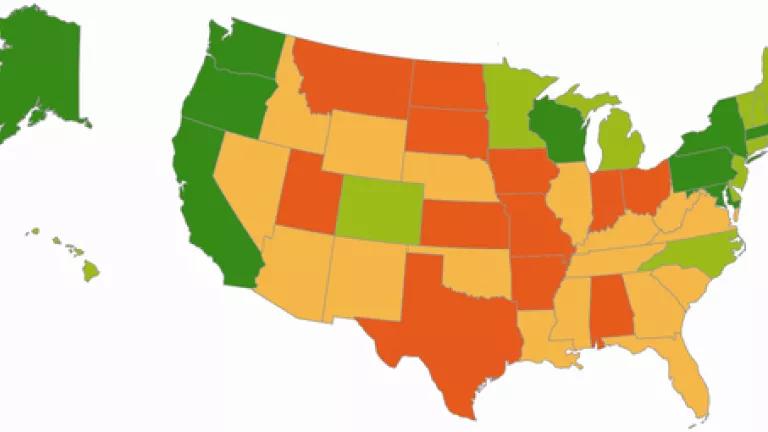Most Drought States Don't Have Comprehensive Plans to Address Climate Change's Impact on Water

There can be no doubt that the current drought in the U.S. is having horrific impacts on communities across the country. Water supplies are shrinking. Crops are dying. And, due to the drought, 1,234 U.S. counties have been declared natural disaster areas by the U.S. Department of Agriculture. What may be just as bad, though, is that most of the states experiencing drought don’t currently have comprehensive plans to address the impacts that climate change will have on water resources.
In many parts of the U.S., droughts are more likely than not to become more severe and more frequent over the course of the 21st century. And drought is just one of many water-related threats expected to increase because of climate change.
An NRDC report released earlier this year profiled each state’s efforts to prepare for the water-related impacts of climate change. Comparison of NRDC’s state-level results with the current U.S. Drought Monitor map shows remarkable overlap between states facing drought and those that are unprepared for the water-related impacts of climate change.

In fact, of the 28 states with primary disaster designations due to drought, only seven have developed robust (California, Oregon and Wisconsin) or even moderate (Colorado, Michigan, Hawaii and Delaware) climate and water plans.
Addressing the devastating impacts of the current drought should be at the top of everyone’s minds. Indeed, even if you don’t live in a drought-stricken state, you’ll feel the impacts in higher food prices next year. But, over the long term, preparing for the impacts that climate change will have on our water should be a high priority outcome of the current drought.
Today’s droughts should serve as a reminder to federal, state and local officials of the importance of disaster planning and preparedness in relation to climate change and water – and the need to prepare for the future today. Because if we don’t adequately prepare for climate change, the impacts of the next drought might be even worse.

